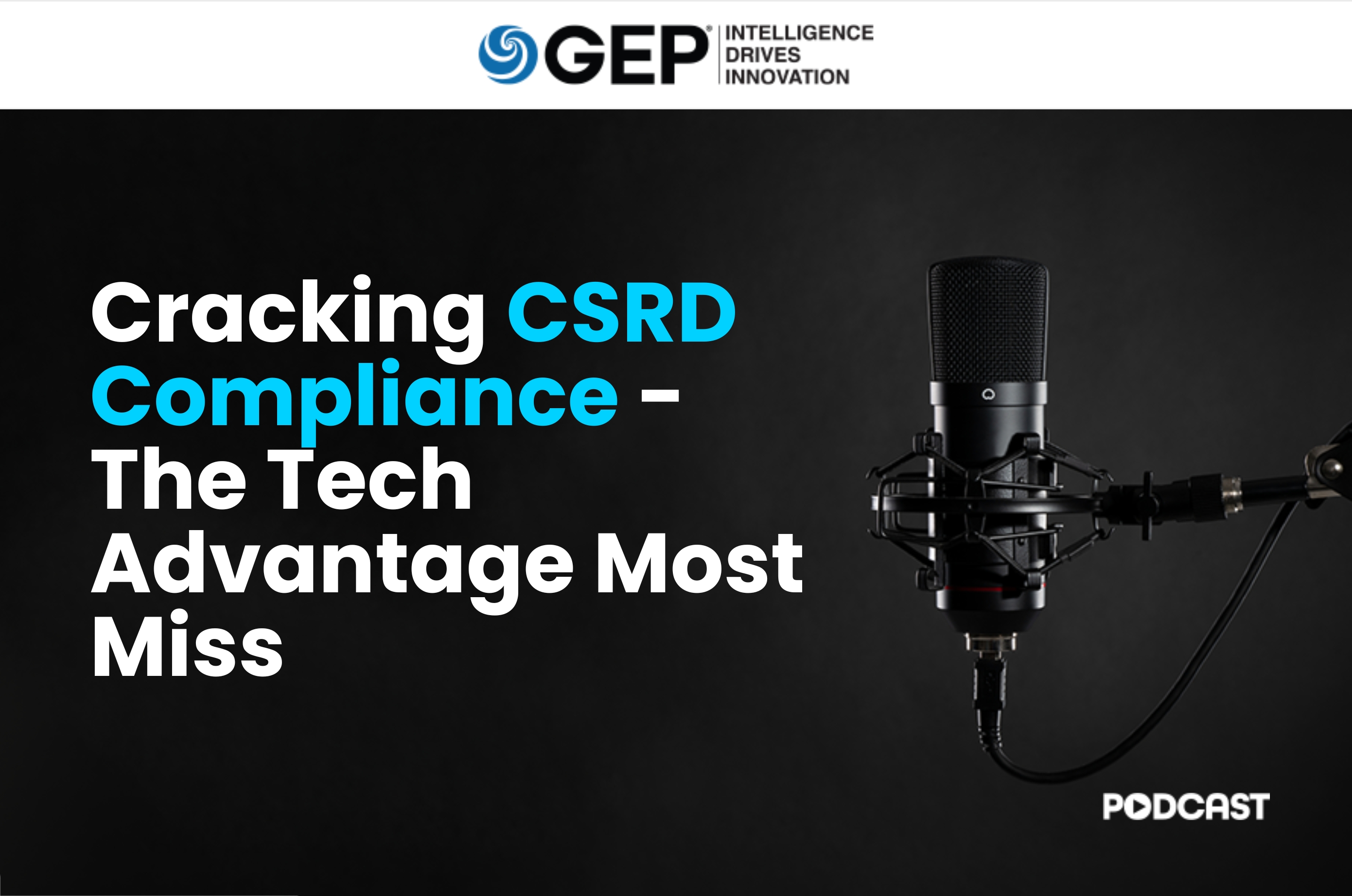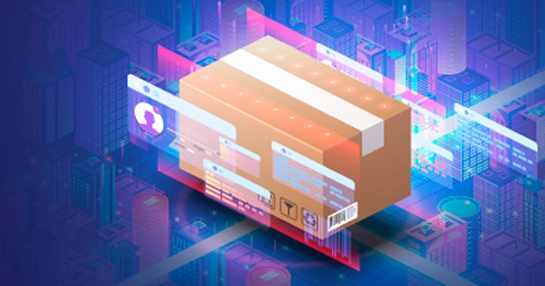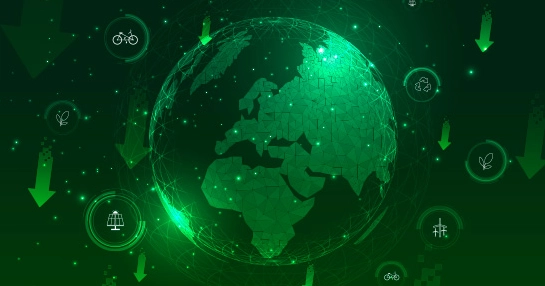-
GEP Software
-
- Procurement Software
- Direct Procurement Software
- Indirect Procurement Software
- Unified Source-to-Pay
- Source-To-Contract Software
- Procure-to-Pay
- Midsize & High Growth Enterprises
- Key Capabilities
- Spend Analysis
- Sourcing
- Contract Lifecycle Management
- Supplier Lifecycle Management
- Third-Party Risk Management
- Purchasing
- Payments
- Data Analytics and Reporting
- Do more with GEP SMART
- Intake Management & Orchestration
- Intelligent Category Management
- Tail Spend Management
- Cost Data & Analytics (GEP COSTDRIVERS)
- AI-First Supply Chain Management
- Supply Chain Visibility and Execution
- Logistics Visibility
- Inventory and Warehouse Management
- GEP Multienterprise Collaboration Network
- Supply Chain Control Tower
- Field Services
- Supply Chain Collaboration & Planning
- Supply Chain Planning
- Purchase Order Collaboration
- Forecast Collaboration
- Capacity Collaboration
- Quality Management Software
- Should-Cost Modeling
- Direct Material Sourcing
-
-
GEP Strategy
-
GEP Strategy
Unrivaled supply chain and procurement expertise + the transformative power of AI
Supply Chain Consulting
- Environmental, Social and Governance
- Sustainability Consulting Services
- Socially Responsible Sourcing
- Scope 3
- Demand and Supply Chain Planning
- Collaborative Planning
- Source To Contract
- Procure To Pay
- Inventory Strategy & Management
- Operations & Manufacturing Excellence
- GEP Total Inventory Management Solution
- Network Strategy & Optimization
- Warehousing & Transportation Management
-
-
GEP Managed Services
-
GEP Managed Services
World-class skills, experience and know-how — amplified by the power of AI
-


Cracking CSRD Compliance
The Tech Advantage Most Miss
The Corporate Sustainability Reporting Directive is here, and it is transforming ESG reporting. For procurement and supply chain leaders, it is more than a legal requirement. It is a chance to strengthen operations, increase transparency, and build long-term value.
In this episode, we unpack what CSRD really means for your business. We go beyond the headlines to show how compliance can become a driver for measurable sustainability progress. Drawing on insights from GEP’s latest white paper, we explore the standards, the challenges, and the technology that can make the difference between struggling to keep up and setting the pace.
What You’ll Hear:
- What double materiality means and why it changes the way you report
- The top three ESG data challenges and how leaders are solving them
- How automation and AI can find data gaps and improve quality
If you have been wondering how to move CSRD from a reporting exercise to a competitive advantage, this conversation is for you.
This is a audio recording of a recent podcast.
PODCAST SUMMARY
1. What Makes CSRD More Than Just Another Reporting Rule?
The Corporate Sustainability Reporting Directive, or CSRD, is changing how companies think about ESG reporting. This is not just another form to fill out. It demands a much deeper look at your business, requiring a double materiality assessment. That means you must measure your company’s impact on the environment and society, and also understand how sustainability risks could affect your performance, your profits, and your future.
It also standardizes the process through the European Sustainability Reporting Standards, or ESRS, so that everyone works from the same framework. On top of that, it requires limited assurance on non-financial data. This is the same kind of independent check you see in financial audits, and it raises the bar for credibility and accuracy.
For procurement and supply chain leaders, this is a major shift. The complexity of global supply chains makes ESG data collection and verification challenging, and CSRD is raising expectations across the board.
2. Where Do Companies Struggle, and How Are They Overcoming It?
Most organizations run into three main challenges: inconsistent data, a shortage of ESRS expertise, and difficulty connecting new ESG reporting needs with existing financial and operational systems. A recent Global Reporting Initiative study found that 65 percent of companies struggle with inconsistent sustainability data, especially when it comes from multiple suppliers and markets.
The podcast outlines how leading companies are getting ahead of these challenges:
- Making it a company-wide effort. CSRD is not just the sustainability team’s job. Leaders are bringing together finance, operations, procurement, and leadership to work from the same playbook.
- Building strong data governance. Automation is helping to pull ESG data together from many sources, while AI is used to find and fix gaps or inconsistencies.
- Investing in the right tools. The most effective platforms simplify ESRS requirements, keep up with regulatory changes, integrate smoothly with ERP and CRM systems, and offer user-friendly dashboards that make complex processes easier to manage.
A GEP case study shows what this can achieve. A global technology innovator consolidated ESG data from over 150 suppliers in three continents in just a few weeks. They automated the collection process, validated data for assurance readiness, and uncovered opportunities to work with more sustainable suppliers.
3. Why the Right Tools Turn Compliance into Competitive Advantage
Getting CSRD right is not just about avoiding fines or penalties. It is about showing investors, regulators, and customers that your business takes sustainability seriously and is acting on it. The right ESG reporting technology can make your progress measurable, uncover better supplier partnerships, and improve stakeholder trust.
The episode leaves listeners with a challenge. Instead of treating CSRD as another compliance hurdle, use it to embed sustainability at the heart of your strategy. For procurement and supply chain leaders, that means adopting technology that can keep pace with evolving rules while enabling faster, smarter, and more responsible business decisions. The GEP white paper discussed in the episode maps out how to make this shift in practice.
TO LISTEN, Please Enter your EMAIL ID
JUST A FEW MORE THINGS ABOUT YOU









